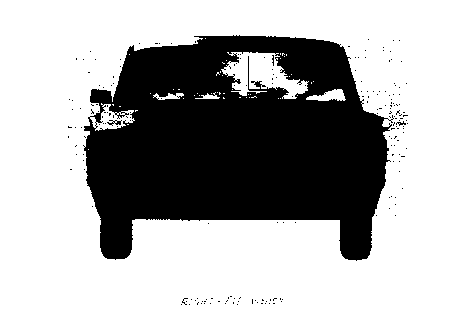Some of the information on this Web page has been provided by external sources. The Government of Canada is not responsible for the accuracy, reliability or currency of the information supplied by external sources. Users wishing to rely upon this information should consult directly with the source of the information. Content provided by external sources is not subject to official languages, privacy and accessibility requirements.
Any discrepancies in the text and image of the Claims and Abstract are due to differing posting times. Text of the Claims and Abstract are posted:
| (12) Patent Application: | (11) CA 2265092 |
|---|---|
| (54) English Title: | CAR HEADS UP DISPLAY |
| (54) French Title: | SYSTEME DE VISUALISATION TETE HAUTE POUR AUTOMOBILES |
| Status: | Deemed Abandoned and Beyond the Period of Reinstatement - Pending Response to Notice of Disregarded Communication |
| (51) International Patent Classification (IPC): |
|
|---|---|
| (72) Inventors : |
|
| (73) Owners : |
|
| (71) Applicants : |
|
| (74) Agent: | |
| (74) Associate agent: | |
| (45) Issued: | |
| (22) Filed Date: | 1999-03-17 |
| (41) Open to Public Inspection: | 2000-09-17 |
| Availability of licence: | N/A |
| Dedicated to the Public: | N/A |
| (25) Language of filing: | English |
| Patent Cooperation Treaty (PCT): | No |
|---|
| (30) Application Priority Data: | None |
|---|
In a Car driving, it is known to be dangerous for the driver to read heads
down display panels. In a PC-car or Networking Car, it is impossible for the
driver to look down on the computer screen and read text web browser
while he is driving on a high intensity road. In the "Car Heads Up Display"
invention, Web browser are projected onto the windshield with co-polarized
lens that is fixed on the roof inside a car. The beam of co-polarized light
reveals a co-polarized image on the windshield. The driver wear a pair of
co-polarized glass. The direction of polarized light of the two lens are
perpendicular to each other. The polarized direction of light that is
projected
onto the windshield is parallel to the right lens. As a result, the picture
that
is projected onto the windshield is visible only to the right eye while be
invisible to the left eye. Function of the left eye is to see the road
condition
only, the right eye is to see both the road condition and the image that is
projected on the windshield. With this task allocation between the two eyes
by co-polarized beam of light, I reached two features:
1. Keep the valuable windshield totally transparent which is very important
for the driver to drive safely.
2. No matter how complex the two dimentional co-polarized picture that is
projected onto the windshield is, the driver won't feel hard to see the road
condition.
Challenge:
A totally transparent windshield is valuable for driving safely, a Heads Up
Display which enables both totally transparent windshield and images for
the driver to check vehicular functions and browse Internet.
Note: Claims are shown in the official language in which they were submitted.
Note: Descriptions are shown in the official language in which they were submitted.

2024-08-01:As part of the Next Generation Patents (NGP) transition, the Canadian Patents Database (CPD) now contains a more detailed Event History, which replicates the Event Log of our new back-office solution.
Please note that "Inactive:" events refers to events no longer in use in our new back-office solution.
For a clearer understanding of the status of the application/patent presented on this page, the site Disclaimer , as well as the definitions for Patent , Event History , Maintenance Fee and Payment History should be consulted.
| Description | Date |
|---|---|
| Inactive: IPC from MCD | 2006-03-12 |
| Application Not Reinstated by Deadline | 2002-03-18 |
| Time Limit for Reversal Expired | 2002-03-18 |
| Inactive: Adhoc Request Documented | 2001-11-05 |
| Deemed Abandoned - Failure to Respond to Notice Requiring a Translation | 2001-05-22 |
| Deemed Abandoned - Failure to Respond to Maintenance Fee Notice | 2001-03-19 |
| Inactive: Incomplete | 2001-02-20 |
| Application Published (Open to Public Inspection) | 2000-09-17 |
| Inactive: Cover page published | 2000-09-17 |
| Inactive: Correspondence - Formalities | 2000-06-27 |
| Inactive: Office letter | 1999-11-22 |
| Change of Address Requirements Determined Compliant | 1999-11-22 |
| Change of Address or Method of Correspondence Request Received | 1999-11-01 |
| Inactive: IPC assigned | 1999-04-28 |
| Inactive: IPC removed | 1999-04-28 |
| Inactive: First IPC assigned | 1999-04-28 |
| Inactive: IPC assigned | 1999-04-28 |
| Inactive: First IPC assigned | 1999-04-28 |
| Inactive: Filing certificate - No RFE (English) | 1999-04-13 |
| Filing Requirements Determined Compliant | 1999-04-13 |
| Application Received - Regular National | 1999-04-13 |
| Abandonment Date | Reason | Reinstatement Date |
|---|---|---|
| 2001-05-22 | ||
| 2001-03-19 |
| Fee Type | Anniversary Year | Due Date | Paid Date |
|---|---|---|---|
| Application fee - small | 1999-03-17 |
Note: Records showing the ownership history in alphabetical order.
| Current Owners on Record |
|---|
| HUA JIANG |
| Past Owners on Record |
|---|
| None |